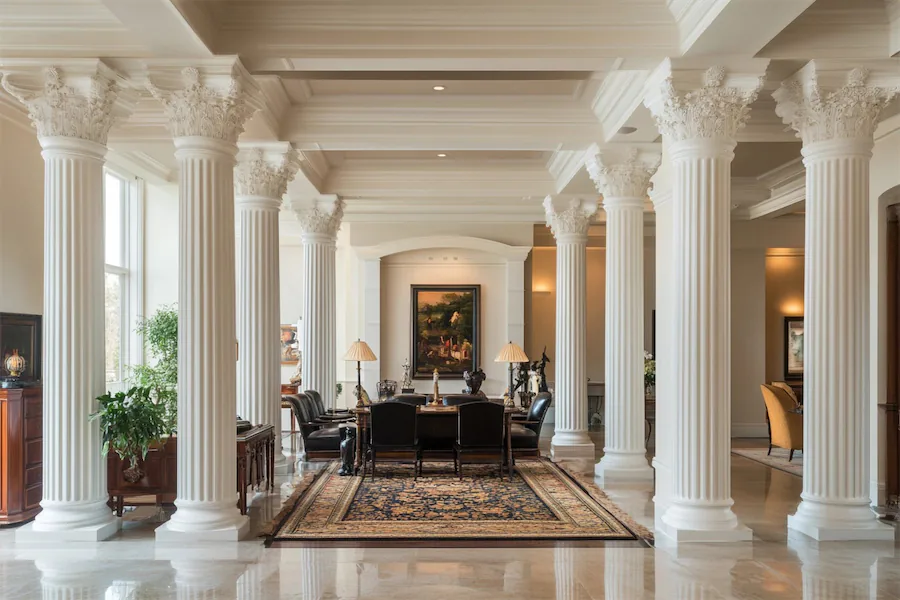The Empire style, which flourished in France during the early 19th century under Emperor Napoleon I, represents a significant phase of Neoclassical art and architecture. This movement sought to evoke the grandeur of ancient civilizations, particularly imperial Rome and Egypt, aligning with Napoleon’s imperial ambitions.
Introduction to Empire Style Columns
In Empire architecture, columns are prominent features that convey strength, authority, and classical elegance. They are often employed to support porticos, frame entrances, and adorn facades, contributing to the monumental and imposing character of Empire-style buildings.
History and Origins of Empire Style Columns
The adoption of classical elements, such as columns, in Empire architecture was influenced by Napoleon’s desire to associate his regime with the illustrious empires of ancient Rome and Egypt. This led to the incorporation of classical orders—Doric, Ionic, and Corinthian—into architectural designs, symbolizing power and continuity with revered historical traditions.
Key Features of Empire Style Columns
Empire style columns are characterized by:
- Classical Orders: Utilization of traditional Greek and Roman column styles, including Doric, Ionic, and Corinthian orders, each bringing distinct proportions and decorative elements.
- Monumentality: Columns are often oversized and paired with grand entablatures, enhancing the imposing and authoritative presence of the structure.
- Decorative Elements: Incorporation of motifs such as laurel wreaths, eagles, and other imperial symbols, reflecting the political aspirations of the era.
Applications of Empire Style Columns
Notable examples of Empire style columns include:
- La Madeleine, Paris: Originally intended as a temple to honor Napoleon’s army, this church features a prominent colonnade of Corinthian columns, exemplifying the grandeur of Empire architecture.
- Arc de Triomphe, Paris: Commissioned by Napoleon in 1806, this monumental arch is adorned with engaged columns that frame its facades, embodying the imperial aesthetic.
Considerations When Designing Empire Style Columns
When incorporating Empire style columns into architectural designs, it is essential to consider:
- Proportionality: Ensuring that the size and scale of the columns harmonize with the overall structure to maintain aesthetic balance.
- Symbolism: Selecting decorative motifs that align with the intended message or function of the building, reflecting the values and aspirations associated with the Empire style.
- Material Selection: Choosing durable materials, such as stone or stucco, that can be finely crafted to achieve the desired level of detail and ornamentation.
Conclusion
Empire style columns are integral to the architectural language of the early 19th century, encapsulating the ambition to revive classical grandeur in service of contemporary imperial narratives. Their imposing presence and rich ornamentation continue to influence architectural designs, symbolizing strength, authority, and a connection to the esteemed traditions of antiquity.
